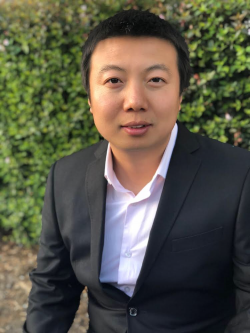Machine Learning Algorithms for Exploiting Spectral Structures of Biological Networks
Date and Time
Friday, April 27, 2018 - 12:30pm to 1:30pm
Location
Computer Science Small Auditorium (Room 105)
Type
CS Department Colloquium Series
Speaker
Bo Wang, from Stanford University
Host
Mona Singh
Networks are ubiquitous in biology where they encode connectivity patterns at all scales of organization, from populations to a single cell. How to extract and understand non-trivial topological features and structures inherent in the networks is critical to understanding interactions within complicated biological systems. In this talk, I will introduce recent developments of machine learning algorithms that exploit spectral structures of networks for a wide range of biological applications, ranging from single-cell analysis to function prediction on protein-protein interaction networks. Specifically, I will first present a new method named SIMLR, combining both low-rank spectral regularization and multiple- kernel learning, to construct cell networks for sparse noisy single-cell RNA-seq data. The learned cell networks will enable effective dimension reduction, clustering and visualization. Second, I will discuss a novel method, Network Enhancement (NE), that aims to de-noise complex networks such as protein-protein interaction networks without corrupting spectral structures of the networks, therefore improving function prediction accuracy. Last, I will also briefly introduce recent advances where deep convolutional neural network is applied on biological networks (e.g., drug-target network) as a first-order spectral approximation of network structures.
Bio:
Bo Wang is a recent PhD graduate in Computer Science at Stanford University, an IEEE and CVF Fellow and an NSF Graduate Research Fellow. His research focuses on machine learning (particularly deep learning) on many applications in computer vision (e.g., image segmentation, object detection) and computational biology (e.g., single-cell analysis, integrative cancer subtyping). Prior to Stanford, he received his master degree at University of Toronto, majoring in numerical analysis.

